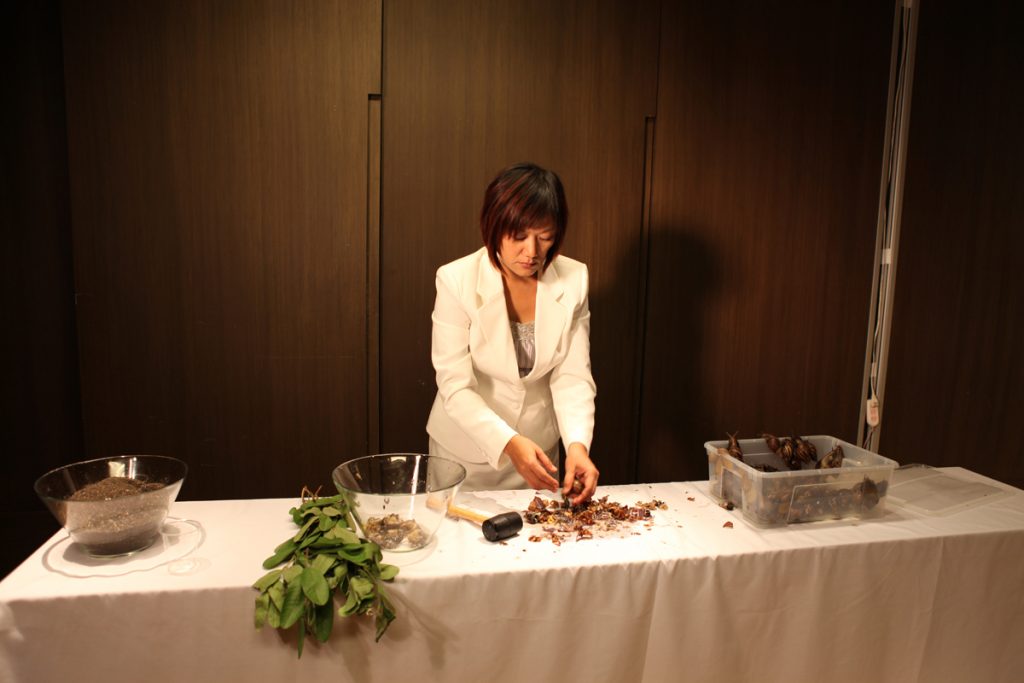Browse

From 2009 to 2013, I have completed a series of six art projects with the subject of the ‘African giant snail’. It is because when I was young, my separated Paiwan mother used to collect and clean the snails then apportion to the kids she could not be with. Thereafter, I have become involved with the snail topic and developed my own methodology – from discussing on my maternal indigenous culture to backtracking the history of Taiwan since Japanese colonial period.
The Achatina Fulica (snail) started its great navigation from East Africa to the Malay Peninsula, North Borneo, East Indies and Hawaii, etc, had a brief stopover in Singapore, before the Japanese health technician Shimojo Kumaichi, brought it into Taiwan as the source of gourmet. The global omnipresent Achatina Fulica is notoriously known as the top 100 foreign invasive species in the world. The snail ‘Journey’ series restarted in 2019 used cuisine to reflect the migration route of the giant snail. How the shared memory reflects the expansion path of an empire, and how culture innovates and evolves itself. I found new narrative and alternate way to cook the snail in my first stop Singapore, and the research also brought us to further understanding and reconnecting our colonized pasts. Together we processed the haunted mucus to refine a snail speciality cuisine. Here is what I collect in the map of snail recipes. (Chang En-Man)
Chang En Man engages her artistic practice in Taiwan’s indigenous communities’ acclimation to the irreversible process of modernization for their cultural, social, and basic survival. Her work is concerned with the urban indigenous communities in Taiwan. Through a suited form of mockery, her approach eschews the stereotypical vantage point of exoticism or victimization. The snail has always been the artist’s subject of observation, which she studies to examine its relationship with contemporary aborigines, especially since snails are a common dish in Taiwan. Yet this species was originally introduced into Taiwan as a result of globalization. Edible snails not only are enmeshed in a complex social, economic, and cultural context, but also provide an intricate analytical point of view. Thus, the local ingredient becomes the artist’s means to re-challenge the cultural construct behind the taste of the contemporary middle class. (Nobuo Takamori, The Middleman, the Backpacker, the Alien Species, and the Time Traveler)
NML Residency & Nusantara Archive project (The 1st Year): www.facebook.com/NusantaraArchive/
Organizer: No Man’s Land; Digital Art Foundation
Associate Organizer: ET@T, Open-Contemporary Art Center
Research Advisory Team: Fiona Cheng, Wu Ting-Kuen, Posak Jodian, Penwadee NM (supported by National Culture and Arts Foundation)